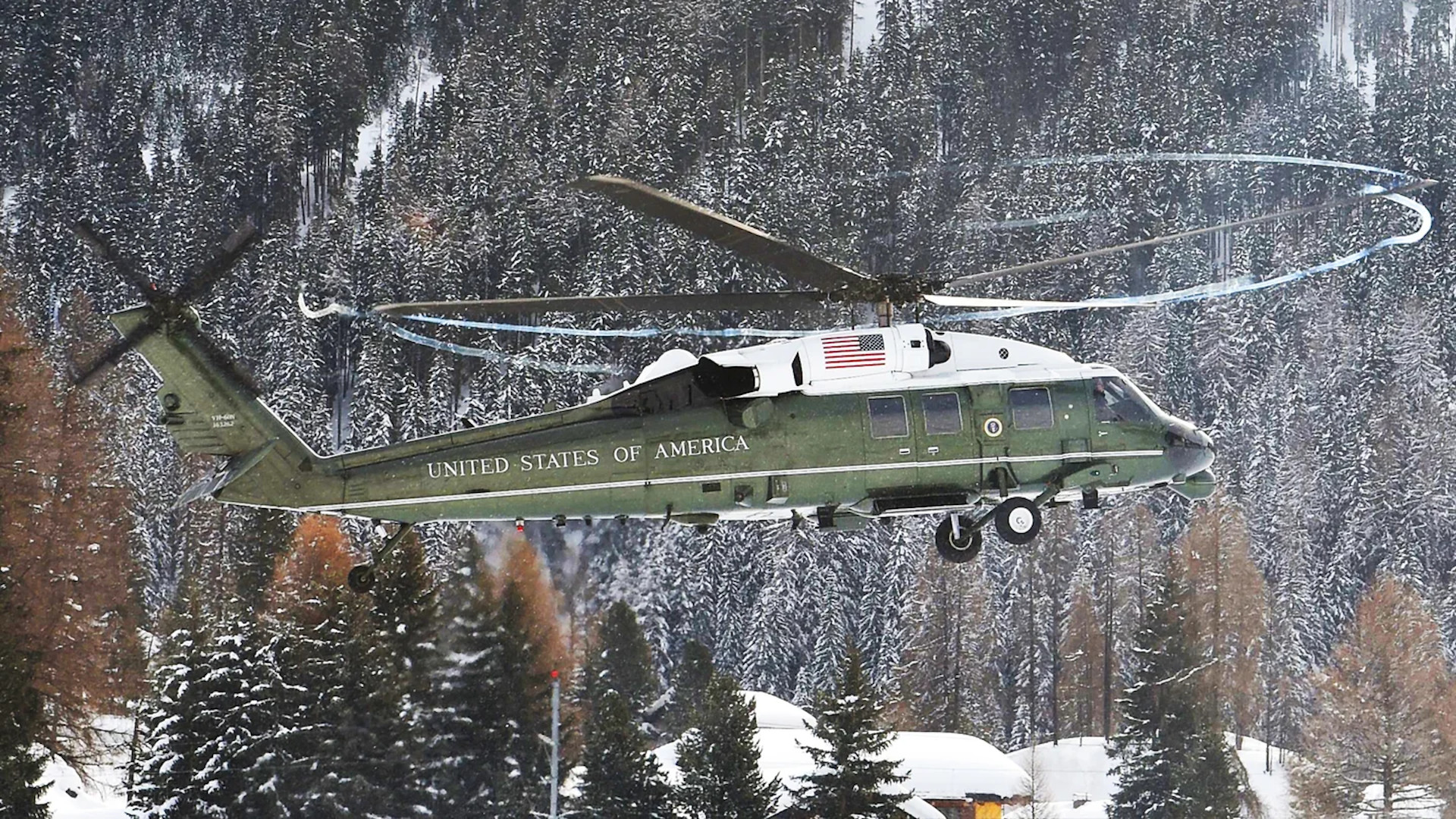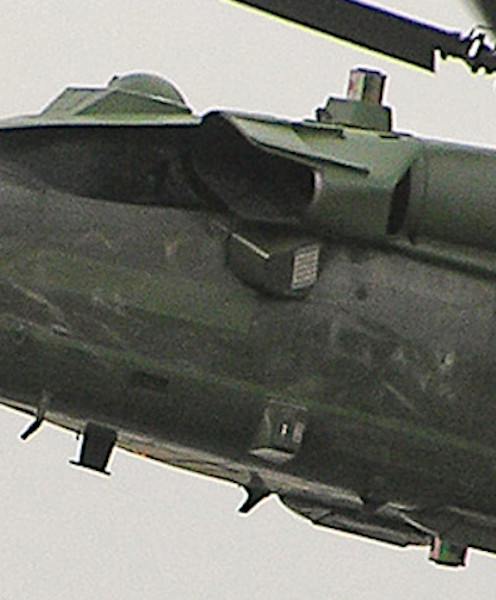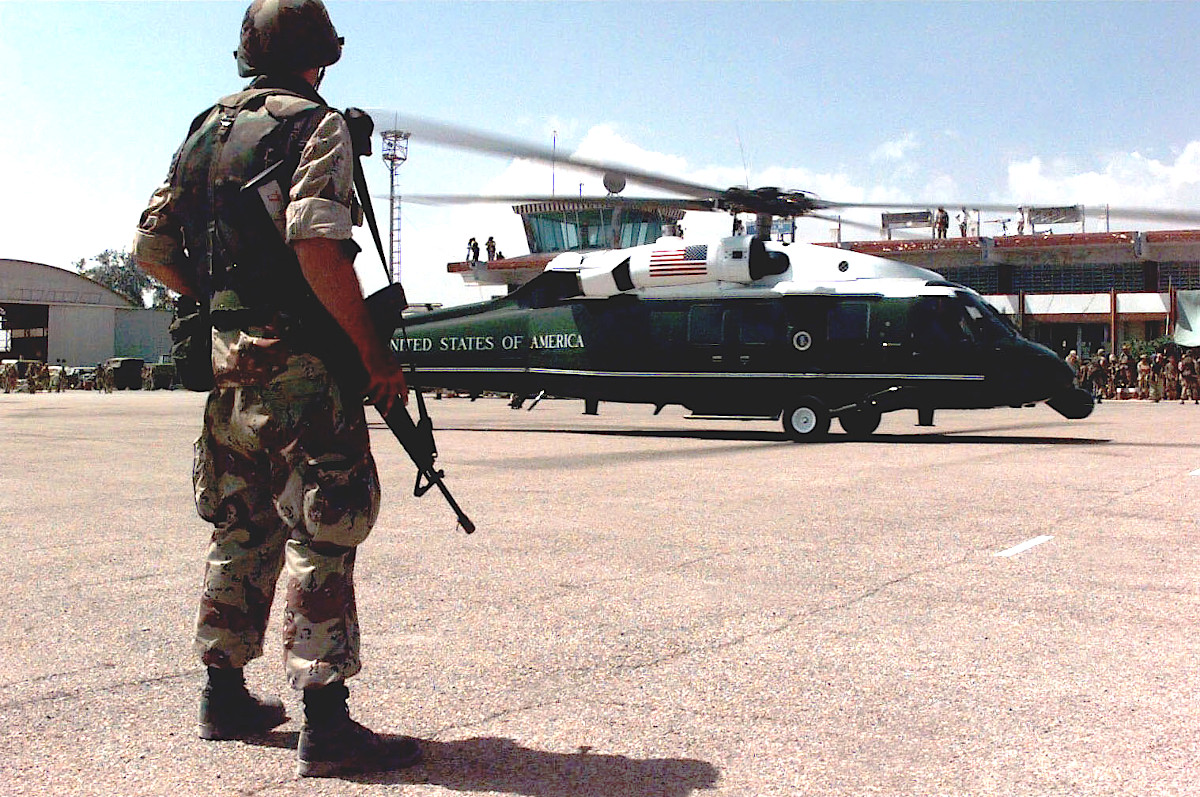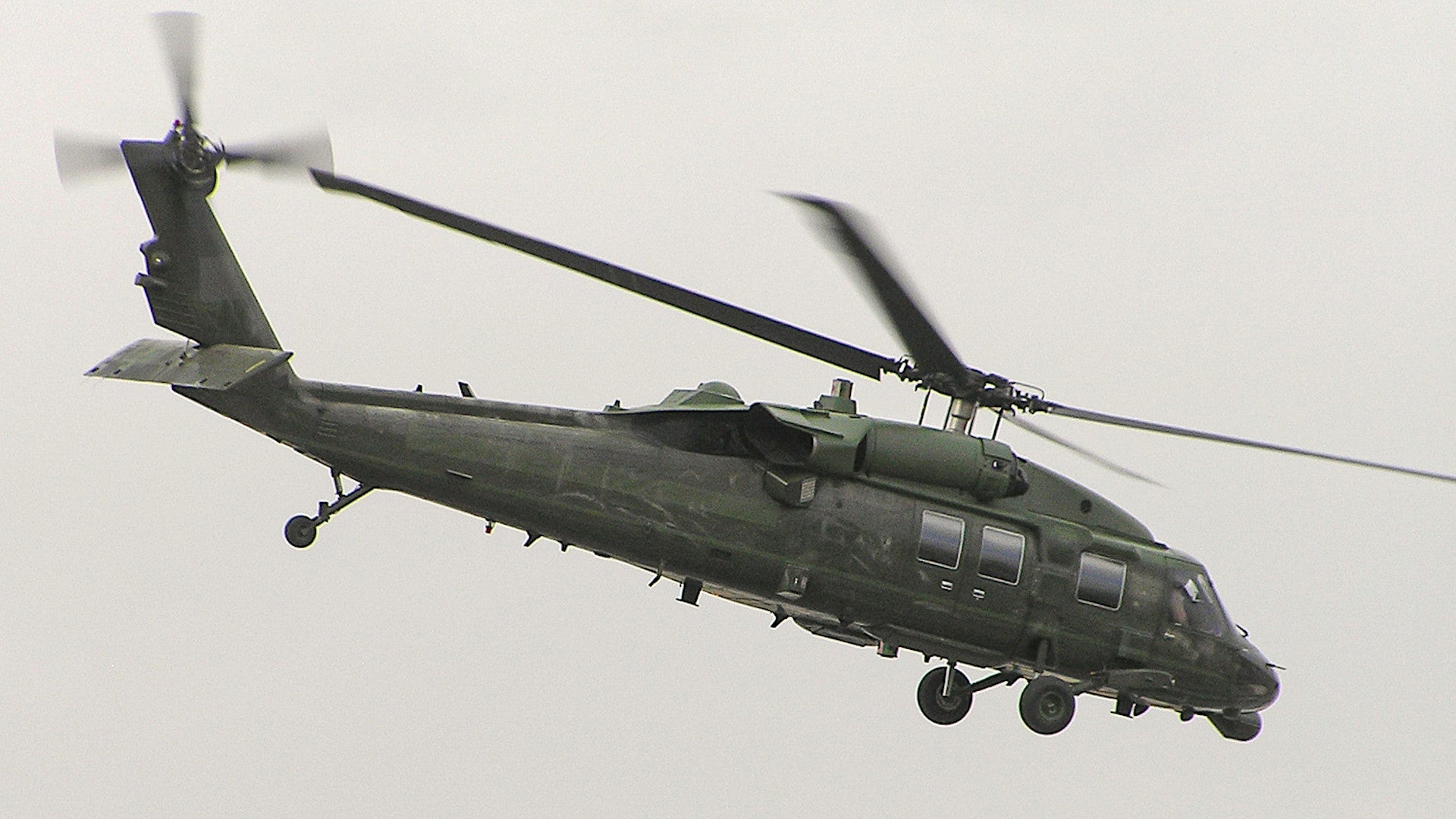Just last week, The War Zone wrote about the lone “green top” UH-60N helicopter assigned to Marine Helicopter Squadron One, which is better known for its “white top” VH-3Ds and VH-60Ns that shuttle the president, their family, and their closest advisors around where ever they might need to go. After publishing that piece, we were alerted to another unusual picture, this one showing what could be best described as a “green-washed” VH-60N from President George W. Bush’s historic visit to Afghanistan in 2006, just in time for President’s Day.
Aviation photographer Stephan de Bruijn grabbed a picture of the VH-60N, seen at the top of this story, as it flew over Afghanistan’s capital Kabul on March 1, 2006, and kindly shared it with us. The helicopter’s muted overall green paint job is nevertheless eye-catching given its contrast to the usual high-visibility white-and-green scheme these helicopters, as well as the rest of Marine Helicopter Squadron One’s (HMX-1) white top fleets, typically wear. The over-painting is clearly temporary, too, as parts of the standard paint scheme can be seen underneath.

We at The War Zone are unaware of any other pictures showing VH-60Ns anywhere with this kind of temporary paintwork. It was almost certainly done to help conceal that the helicopter that was carrying President Bush and his entourage by trying to make it look more like a standard U.S. Army UH-60 Black Hawk.
The countermeasures dispenser underneath its right-side engine exhaust is also loaded with decoy flares, something that is not commonly seen in pictures of VH-60Ns in lower-threat environments. The flares would help protect against heat-seeking missiles, including shoulder-fired types also known as Man-Portable Air Defense Systems, or MANPADS. This particular helicopter also has two AN/ALQ-144 infrared jammers, also known as “disco balls,” above and below the fuselage, which provide additional defense against these types of threats. In the years since this picture was taken, those have been replaced by directional infrared countermeasures (DIRCM) systems, which you can read more about in these past War Zone pieces.

De Bruijn said that this helicopter subsequently landed at a heliport that the NATO-led International Security Assistance Force (ISAF) operated at the time situated near the U.S. Embassy. Construction on what was then a nearly brand-new American Embassy compound in Kabul had only been completed earlier that year. President Bush cut a ceremonial ribbon to officially open it during his visit, though U.S. diplomatic personnel had already started working there at that point.
De Bruijn says that additional UH-60 Black Hawks, as well as CH-47 and MH-47 Chinook helicopters, also supported the President’s trip. A number of these helicopters were assigned to elements of the Army’s elite 160th Special Operations Aviation Regiment (SOAR) that were deployed to the country at the time. “Overhead was an AC-130 and a flight of A-10s gave Close Air Support while F-16s gave top cover,” he added in the description accompanying a copy of the photo on AirHistory.net. “Quite an operation!”
It’s not surprising at all that every possible security precaution was taken during this trip, which marked the first time Bush had been to Afghanistan since U.S.-led intervention in the country had begun in late 2001 very shortly after the 9/11 terrorist attacks. It was also the first time any U.S. President had set foot in the country since Dwight D. Eisenhower had traveled there in 1959.

Bush’s trip had been planned two months in advance under the strictest secrecy, with members of the traveling Press Pool only being alerted as to their actual destination when Air Force One stopped at Shannon Airport in Ireland to refuel. The stopover in Afghanistan was part of a larger trip that took the President to India and Pakistan, as well.
It’s not all clear how often HMX-1 has used this “green-washing” technique to obscure its white top helicopters during deployments to higher-risk locations. As already noted, we’re unaware of any other pictures showing this practice. We also do know that VH-60Ns, specifically, have flown in their standard scheme in more dangerous locales, including in support of President H.W. Bush’s visit to Somalia between Dec. 31 and Jan. 2, 1993.

The security surrounding visits by the President, as well as other senior U.S. officials, to Afghanistan, is still extremely high, and for good reason, even after nearly two decades of fighting. As such, helicopters remain a primary mode of transportation for U.S. personnel in much of the country, even for diplomatic staff just making the short hop from Hamid Karzai International Airport in Kabul to the U.S. Embassy compound, flights that take around five minutes, as you can read about in more detail in this past War Zone piece.
Regardless, HMX-1’s days of flying any H-60 variants, no matter how green their paint scheme might be, are coming closer and closer to an end. The squadron’s VH-60Ns, along with its VH-3Ds, are set to be replaced by new VH-92As in the next few years. The UH-60N, which serves primarily as a trainer for the VH-60Ns, is set to follow those helicopters into retirement.
By the next President’s Day, the VH-92As should be much more prevalent in HMX-1’s day-to-day operations. We’ll have to keep an eye out to see if any of them get “green-washed” when they start heading overseas.
Contact the author: joe@thedrive.com
